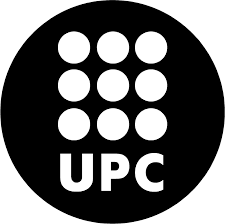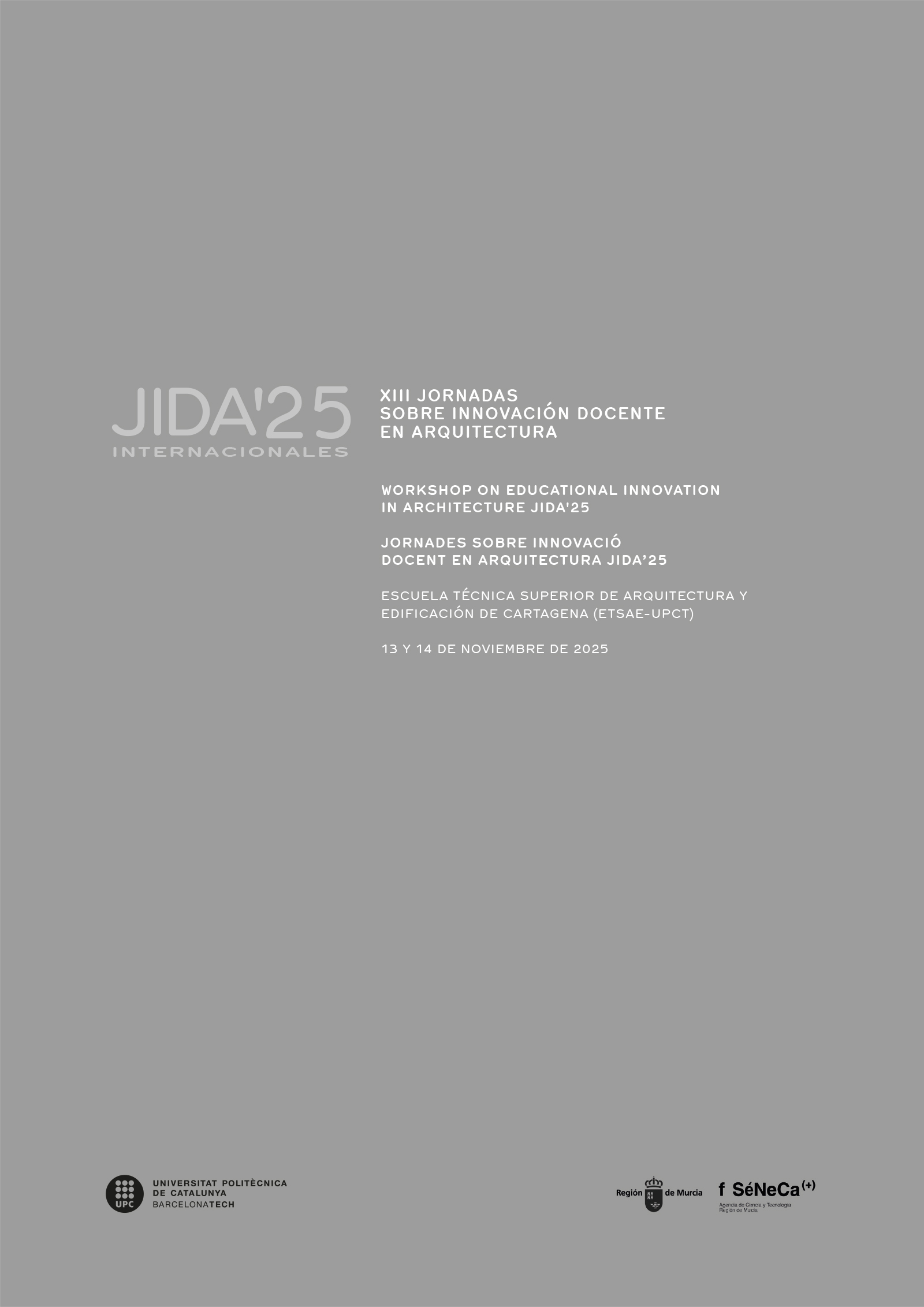The Rabasa Lagoons: one site, two courses, a research-based teaching experience
DOI:
https://doi.org/10.5821/jida.2025.13660Keywords:
wasteland, Rabasa lagoons, Alicante, critical cartography, speculative fabulationAbstract
This paper presents the results of two consecutive Architectural Design Studio courses carried out at the XYZ lagoons, a 428-hectare vacant lot that has become an ecosystem of high ecological value after its abandonment as a clay quarry. The course was conceived from the absence of architecture understood as urbanization or colonization, using tools such as critical cartography, speculative fiction, and the production of installations. The project was developed as research by design laboratory, in which students assumed the role of researchers and faculty acted as mediators. The creation of a collective atlas, critical maps, bastard manifestos, fictions, and new materialities allowed the development of open hypotheses in response to controversial and complex situations. The results show the capacity of architectural design to produce critical knowledge, foster collective reflection, and open debates transferable to other vacant lots, urban peripheries, and transitional territories.
References
Augé, Marc. 2017. Los no lugares. Barcelona: Gedisa,
Castro-Domínguez, Juan Carlos. 2025a. "Futuro y [ciencia] ficción." [i2] Investigación e Innovación en Arquitectura y Territorio 13(2), 7-12. https://i2.ua.es/article/view/30504.
Castro-Domínguez, Juan Carlos. 2025b. Atlas menor de descampados: hacia una lectura patrimonial de los vacíos urbanos de Alicante. VAD. Veredes, Arquitectura y Divulgación, 13, 44-58. https://veredes.es/vad/index.php/vad/article/view/castro-dominguez-atlas-menor-de-descampados-vacios-urbanos
Barrale, Julián; Waidler, Melanie; Higueras, Ester; Seve, Bruno. 2024. Imaginabilidad de la sociedad analógica-digital: ecosistemas gráficos de derivas urbanas. JIDA’24. XIII Jornadas sobre Innovación Docente en Arquitectura. Donostia-San Sebastián, ETSA-UPV/EHU, 14-15 noviembre 2024. DOI: 10.5821/jida.2024.13260.
Corner, James, ed. 1999. Recovering Landscape: Essays in Contemporary Landscape Architecture. New York: Princeton Architectural Press.
Jorge-Huertas, Virginia; Rodríguez-Aguilera, Ana Isabel. 2023. Dibujar y cartografiar: un marco teórico para arquitectura y paisajismo. JIDA’23. XII Jornadas sobre Innovación Docente en Arquitectura. Pamplona, ETSA-UNAV, 16-17 noviembre 2023. DOI: 10.5821/jida.2023.13256.
González-Ruibal, Alfredo. 2024. “Espacios del deshacer. Geografías del abandono.” En Contar con el abandono. Paisajes de un mundo en ruinas, editado por G. Gatti e I. Rubio-Mengual. Bellaterra: Edicions de la Universitat Autònoma de Barcelona.
Haraway, Donna J. 2019. "Sembrar Mundos." En Seguir con el Problema: Hacer Lugares en el Chthuluceno, 123-145. Buenos Aires: Consonni.
Harley, John Brian. La nueva naturaleza de los mapas. Ensayos sobre la historia de la cartografía. México: Fondo de Cultura Económica (FCE), 2005.
Le Guin, Ursula K. La teoría de la bolsa de transporte de la ficción. 1986. Traducción de Kamen Nedev y José Pérez de Lama, enero de 2021. Versión en castellano de “The Carrier-Bag Theory of Fiction.” Disponible en https://es.anarchistlibraries.net/library/ursula-k-le-guin-la-teoria-de-la-bolsa-de-transporte-de-la-ficcion
Solà-Morales, Ignasi de. 1996. Terrain Vague. Quaderns d’Arquitectura i Urbanisme, 212: 34-43. Barcelona: Col·legi d’Arquitectes de Catalunya.
Schön, Donald A. 1983. The Reflective Practitioner: How Professionals Think in Action. New York: Basic Books.






















